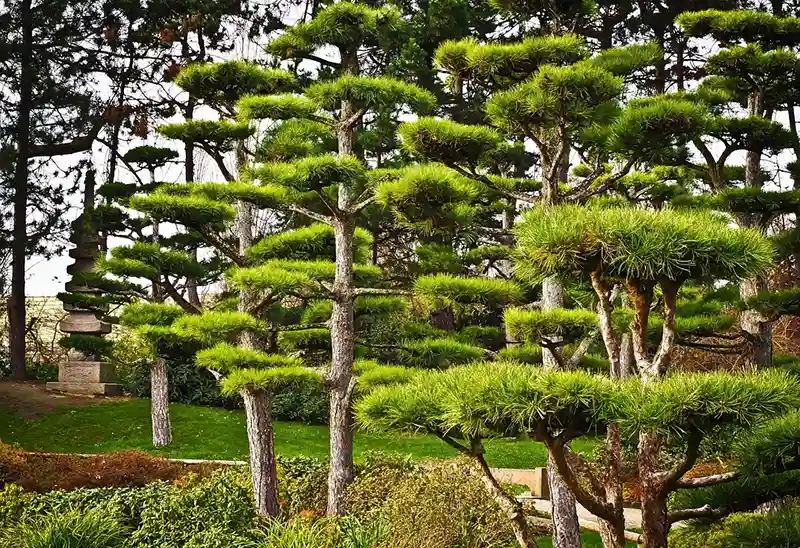The Magick and Mysticism of the Majestic Yew Tree
Taxus baccata – Two words that, when said out loud, sound eerily like a spellcaster’s weapon. In reality, this is the Latin name of one of the most spiritually significant trees any tribe of man has ever known – The majestic and mystical yew.
Yew is a species of lush evergreen tree. Native to western, southern, and central Europe, the British Isles, northwest Africa, southwest Asia, and northern Iran, the yew is most commonly grown as ornamental vegetation.
The majority of the tree is poisonous, containing toxic amounts of taxine alkaloids known to cause complete heart block, cardiogenic shock, and death. However, many cultures throughout our Earth’s history have benefited from various physical and spiritual aspects of the yew. From the ancient druidic orders to the Hundred Years War and even the birth of the infamous Judeo-Christian figure Pontius Pilate, the yew has been like a sacred line connecting the world’s religions, cultures, and histories.
Now that we’ve covered the basics join me as we explore the depths of humanity’s historical fascination with this beautiful but deadly tree.
Darkly Glorious - The Druidic Roots of the Yew
Roots – They anchor nature’s lush, glorious monuments firmly in place and provide them with sustenance. The storms and winds that batter the surface tear leaves from branches and branches from trunks in a dramatic display of force and strength. However, for the most part, roots remain.
Yew roots are more than fibrous stays, though; they are relentless in their pursuit of prosperity. Scottish poets even went as far as calling it ‘the tree of resilience.’ The weeping yew, in particular, became the object of Druidic fascination due to its peculiar growing habits. Druids of old noticed that once the tree reached a certain stage of maturity, its long, low branches, instead of grazing the floor as most aged weeping trees do, grabbed hold of the soil and anchored themselves firmly within it.
A new tree, rooted from the branches of the old, grew green and strong, and this started a whole new life cycle for the majestic yew. The yew tree thus became known among Druidic classes as the tree of life and the tree of longevity.
The Celtic Connection
The ancient Celts, Druidic and otherwise, also knew the yew as the tree of death. Familiar with the toxicity of nearly the entire yew tree, Celts used fluids from its spiny foliage and deadly berries to dip their arrows in before a hunt. Even in England during the time of the illustrious author William Shakespeare, the toxic properties of the yew were no secret. Shakespeare himself chose ‘slips of yew silvered in the moon’s eclipse’ as the titular character in Macbeth’s poison of choice for regicide.
Another reference to the yew in Celtic history comes in the form of war. Robert the Bruce is said to have had a particular interest in yew trees. According to legend, he ordered that bows be made from the strong but flexible wood of the sacred yews at Ardchattan Priory in Argyll. These trees were specifically chosen for their strength, druidic association with longevity and resilience, and the Celtic knowledge that they were deadly. Robert the Bruce ended up winning the battle at Bannockburn in 1314, and for many who believe, it was all due to the mystical energy of the sacred yew bows.
Later, in England, yews became a precious resource due to the efficacy of bows made from their supple wood. In a deafening attempt to thwart any revolt or attempts of combat against the English King’s rule, yews were planted within the safety of sacred church walls. Some records point out that yew was planted far before the formation of even the oldest churches. According to these accounts, the early Christian missionaries saw how significant the yew trees were to the Celtic folk and built their churches near them.
Another theory is that Christian missionaries were not the first to use the yew to appeal to the local faiths. Some historians hold the belief that upon seeing the reverence the Pagans held the yew in, Roman invaders offered church services beneath the yews to appeal to the Pagan locals.
Another place that yews were planted was over graves. Yews are said to thrive on decaying human flesh and were thus ready to be crafted into weapons wielded in the King’s honor instead of to his detriment.
The planting of yews near graves carried on beyond the age of the bow and arrow and is still practiced today among believers in its mystical power. Yews are found in graveyards and churchyards throughout the British Isles, which has renewed their association with death. But its presence near the graves of the British Isles’ dearly beloved has another meaning – rebirth.
There are far too many associations within the borders of the British Isles to cover comprehensively, but here’s a summary of various other myths and legends surrounding the yew:
- Yew trees, particularly the steadfast sentinels in Jesmond Old Cemetery, were planted near graves to protect the dead. Some still believe the trees to be the ancient magickal guardians of the British landscape.
- In Scotland, if you held a yew branch in your left hand, you could speak to anyone without them being able to hear you. However, anyone else present would be able to hear without fault.
- The Irish folk count the yew as one of the nation’s five magickal trees. The yew is sometimes held in higher regard than even the rowan, oak, elder, and hawthorn.
- The yew is believed to be a sacred tree to Hecate, a goddess of the underworld. Locals around the fens thought the tree was a shelter for witches due to its symbolism with Hecate and should thus be avoided.
In Brittany, the tree is believed to hold corpses in place if planted in a cemetery. The yews are said to protect bodies by growing a new root into each mouth. This also creates an association directly between the yew and the body of a deceased person, becoming a vital part of the natural ecosystem. It also speaks to the first words of the emerald tablet; As above, so below. This is a beautiful parallel. As important as we humans regard each other in life so does nature regard us in death.
Yew in Christianity
In its earliest forms, Christianity borrowed many sacred rites, rituals, and beliefs from the religions it sought to replace. Whether this was done to make the faith easier for other tribes to accept or another reason entirely, I don’t know. What is clear, though, is that the importance and sacred symbolic nature of the yew tree was preserved and rooted deep within the new faith. As the fresh-faced faith grew and its influence spread, so did the branches of the perpetually majestic yew.
Palm Sunday is one rite that initially centered around the yew tree. Its branches were used to celebrate Palm Sunday. Palm Sunday is a tradition observed by Christians on the Sunday before Easter. This sacred day in Judeo-Christian faiths is celebrated in commemoration of the arrival of their savior Jesus Christ of Nazareth into Jerusalem, the Holy land. Traditionally, as suggested by the name, fronds of palms were laid on the path that Jesus was to travel. However, due to the dwindling availability of palm trees in unsuitable climates, these were often substituted with other native trees such as olive, box, willow, and the sacred yew.
This substitution may have been a completely coincidental occurrence. Still, other uses of the yew in Christendom tell the story of a faith whose leaders understood the mystical tree’s historical importance to the followers of different, more arcane paths. Even stranger, controversial documents and ancient texts might even suggest that the yew had far more significance to the Christian faith than official texts allude to.
These texts suggest that it was not just a tree used as a substitute in many rites and rituals, but rather the tree of knowledge of life and death, the burning bush, the wood that the Saviour’s cross was made from, and the tree that rooted in the bones of the first man, Adam.
A Tree of Witchcraft and Wizardry
Few trees associated with magick command the respect the yew does. After all, if you don’t respect it, it could very easily be your end. Ancient and modern witches alike see the yew as a vital connection to our ancestors. This majestic tree is seen as the only living creature that could live indefinitely.
This verse by Gillian Kemp perfectly captures the yew’s historical and spiritual significance and why it is such a sought-after tree for wands and spellwork:
“Just as the Yew tree possesses an immortal ability to renew itself, so too do you. Living for centuries, it is a silent witness to the passing of time. Evergreen, its red, waxy cup-shaped berries, enclosing a small poisonous seed, predict protection. A good thing in your life will continue, just as a branch grows down inside the hollow trunk, embedding itself in the soil to sprout a new tree. If you remain working quietly at what you want, like the inconspicuous small green female flowers, you will attract your aim. Communication will surprise you in the same way that the large bright yellow flowers on male trees throw out clouds of yellow pollen when ready to mate.”
All practitioners who use the yew know the dangers of working with the bewitching beauty of the yew. Even once the tree dies, its toxic poison remains. The tree is so deadly that even just breathing in sawdust fallen from its bark can be fatal.
This connection with souls past, deadly beauty, and the very core of the magical world has inspired many of the world’s greatest poets and authors. The most widely known and illustrious of these has to be the incomparable J.K Rowling.
The deadly quality of the yew tree is immortalized in Tom Riddle’s wand. Known to all as Voldemort, He Who Must Not Be Named and the Dark Lord, Riddle possessed a wand as deadly as the tree it was crafted from. 13 and a half inches long and crafted from yew, his wand was affixed with a phoenix feather core. The feather was ripped from Albus Dumbledore’s phoenix, Fawkes. The phoenix gave one other feather used in an equally important wand; that of Harry Potter.
Final Word
By all accounts, the majestic yew is a sacred and powerful tree. Whether to you that power is simply the rich history and symbolism that the yew is associated with or the raw magickal energy that coursed through the veins of the ancient Celts and Druids, you have to admit one thing; The yew is on the list of the most significant and sacred trees the natural world has ever blessed us with.







